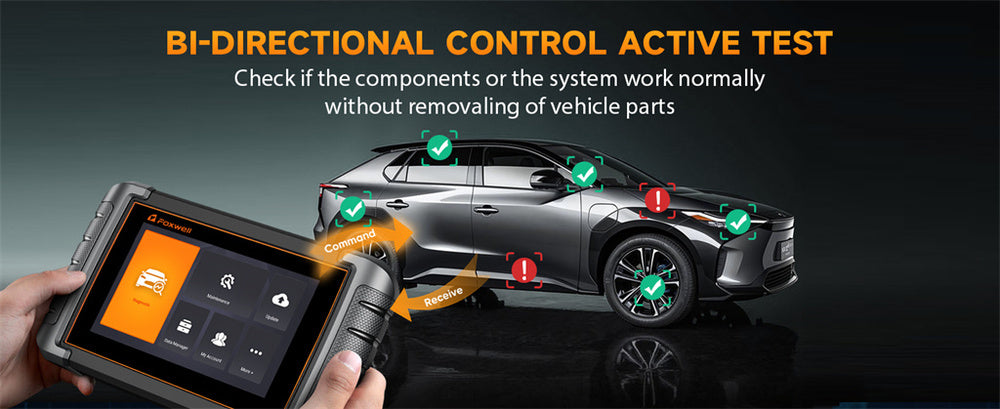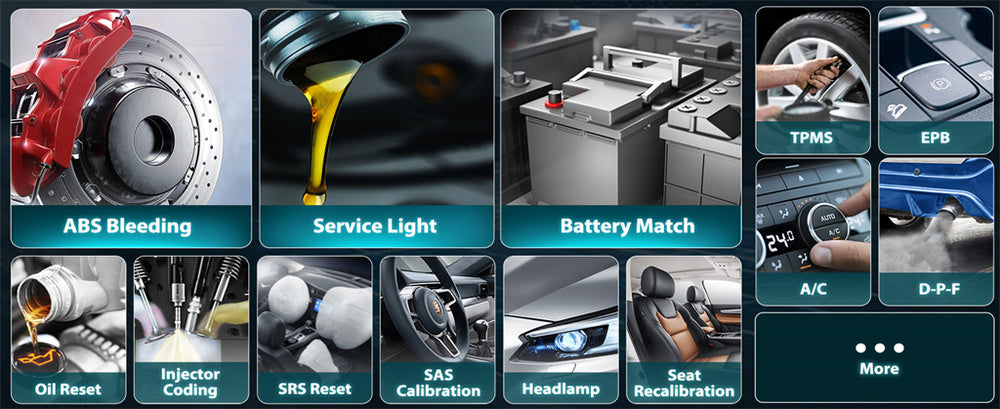While driving through remote countryside, your check engine light suddenly illuminates, prompting panic to set in as you try and figure out what has gone wrong with your car.
An OBD2 scanner comes to the rescue by quickly reading data, understanding what is occurring under the hood, and clearing any fault codes after making necessary repairs.
And this — After a long week at work, it's finally time for that weekend DIY project you've been anticipating - inspecting and tuning up your vehicle to ensure its smooth running.
Equipped with an automotive obd2 scanner, you connect the device, run diagnostic tests on its internal communication bus system, and identify any minor issues on the spot with fixes to erase fault codes quickly - leaving a sense of accomplishment knowing your car is now back to peak condition!
These scenarios illustrate why an OBD2 scanner can be invaluable during emergencies and ongoing vehicle maintenance.
Whether you are an amateur or professional mechanic, being able to read and erase data from your vehicle's systems can save you time, money, and stress.

What Makes an OBD2 Scanner Necessary?
A full-system OBD2 scanner is more than just a convenient gadget; it is a powerful diagnostic tool, offering invaluable insight into your vehicle's health.
Here's why this tool should be considered an essential asset:
Diagnose Multiple Systems: While standard OBD2 scanners only read engine codes, full system scanners offer comprehensive diagnosis capabilities that cover transmissions, ABS systems, and airbag systems - giving a complete picture of your vehicle's health.
Enhance Vehicle Performance: An OBD2 scanner helps maintain peak vehicle performance by quickly detecting and solving issues early.
It enables you to keep tabs on various parameters and adjust as necessary, helping ensure your car runs efficiently and smoothly.
Save on Repair Costs: Identifying issues yourself may save on costly mechanic repairs.
Many problems can be identified and repaired with basic mechanical knowledge alone, saving on diagnostic fees.
Preventive Maintenance: Regularly utilizing a full-system OBD2 scanner can help detect potential issues before they become major ones, providing an opportunistic way of keeping your vehicle running at peak condition for longer.
This proactive approach could extend its lifespan and keep it performing at its best.
Peace of Mind: Knowing you have the tools available to diagnose and fix issues quickly gives you peace of mind during long trips, giving you confidence that any unexpected problems can be addressed quickly and successfully.
Educational Tool: OBD2 scanners can also serve as educational resources, helping car enthusiasts and DIY mechanics better understand their vehicle's systems and how they work. This makes you a more informed and capable car owner.
Key Features of the Best Full System OBD2 Scanners
Consider these features when purchasing a full-system OBD2 scanner to make sure that it offers maximum data reading and erasing capability:
Comprehensive System Coverage: Make sure it covers all major systems, such as the engine, transmission, ABS, and SRS.
Real-Time Data Streams: Live streaming provides accurate diagnosis and troubleshooting.
User-Friendly Interface: A straightforward user interface makes reading and understanding data much simpler.
Erasing Capabilities: Provide reliable erasing functions to clear codes after repairs.
Durability and Portability: A robust build and portable design enable easy usage.
How to Use an OBD2 Scanner for Reading and Erasing Data
Follow these simple steps to maximize the advantages of your entire system OBD2 scanner.
Connect the Scanner: Locate and plug into the OBD2 port under your dashboard near the steering column, usually under the dashboard near the dashboard.
Power Up: Switch your vehicle's ignition on without starting it—this powers all systems, including your scanner.
Initialize Your Scanner: Turn on your scanner. Certain models require you to enter information such as your vehicle's make, model, and year.
Access the Diagnostic Menu: Use the scanner's interface to access its diagnostic menu. Choose an option to initiate a full system scan and proceed from there.
Scan All Systems: Conduct a full system scan to access fault codes in different systems, such as the engine, transmission, ABS, SRS, and others.
Review Data: Your scanner will display diagnostic trouble codes (DTCs). Note them, then use its internal database or an online resource to interpret them.
Investigate Live Data: Many scanners offer real-time streaming of vehicle sensors' live information, enabling you to accurately pinpoint issues more efficiently.
Remedy Issues: Based on codes and data derived from your vehicle, perform any necessary repairs or maintenance tasks.
Once issues are resolved, use the scanner's erase feature to remove fault codes from your vehicle's system and reset its check engine light and warning indicators.
Tips for Using Full System OBD2 Scanners to Read Data and Erase It
To get the best out of your entire system OBD2 scanner, here are a few helpful hints:
Keep Your Scanner Up-To-Date: Make sure your scanner's software remains up-to-date.
Manufacturers frequently release updates covering new vehicle models or improving diagnostic capabilities.
Check for these updates frequently and install them to keep your scanner current.
Understanding DTCs: Familiarize yourself with standard diagnostic trouble codes and their definitions to interpret data and take corrective actions correctly. This will assist with accurate interpretation and decision-making.
Consistent Monitoring: Inspect your vehicle regularly, not only when its check engine light illuminates.
Being proactive about monitoring will enable you to spot potential issues early and prevent them from becoming major headaches.
Safe Erasing Practices: Avoid clearing fault codes without first addressing their source, as this may lead to more extensive damage over time and make diagnosis harder.
Use Manufacturer Resources: It is wise to refer to both your vehicle's manual and scanner's user guide for specific instructions and troubleshooting tips.
Manufacturer resources often offer detailed insight into diagnosing and solving issues quickly and efficiently.
Keep a Record: Make sure to log any codes or issues you experience, along with the steps taken to resolve them.
This record can prove invaluable when diagnosing further or providing information to your mechanic.
It could also be helpful when diagnosing further in the future or providing details to them if required.
Invest in Quality: Although budget-friendly options exist, investing in a higher-grade scanner can result in more reliable diagnostics, enhanced features, and long-term performance.

Conclusion
An OBD2 scanner is an indispensable asset to anyone serious about vehicle maintenance.
By accessing all vehicle systems remotely and reading their data directly, this scanner allows users to keep their cars in excellent condition, detect issues promptly, and save money on repairs.
Whether you are an expert mechanic or simply an enthusiast, investing in an effective full-system OBD2 scanner could make an enormous difference in terms of the longevity and performance of your vehicle.
FAQs
What is a full system OBD2 scanner?
It’s a diagnostic tool that reads and erases data from all vehicle systems, providing comprehensive insights.
Why use a full system OBD2 scanner?
It offers detailed diagnostics, helping identify and fix issues across all vehicle systems.
What features should I look for in an OBD2 scanner?
Look for compatibility, ease of use, real-time data, and the ability to read and erase codes from all systems.




Leave a comment
This site is protected by hCaptcha and the hCaptcha Privacy Policy and Terms of Service apply.